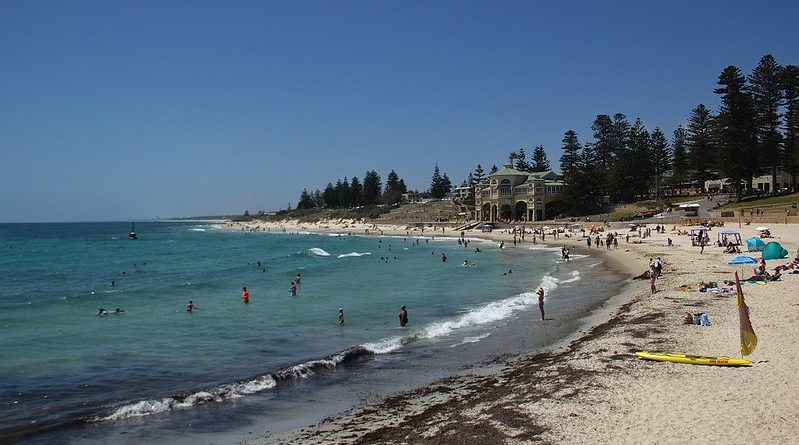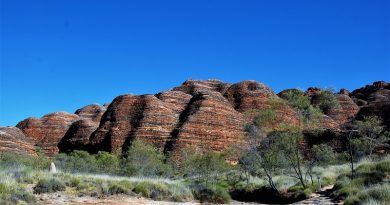Australia’s Deadly Shark Attacks
The killing of a surfer in 2025 in a shark attack on a popular Sydney beach has revived a long-running and delicate debate about how to keep beachgoers safe in Australia’s waters, and turned the spotlight on the state of New South Wales, according to a recent report on the BBC
“Authorities here have a range of measures in their arsenal to mitigate the risk of shark attacks, but the most famous – and most controversial – are nets which are rolled out each summer at many beaches.
Conservationists say the nets do more harm than good – doing little to stop sharks reaching popular breaks and causing massive harm to other marine life – but many scared beachgoers remain attached to them as another layer of protection.
Australia is home to some of the world’s best beaches. More than 80% of the population lives on the coast, so an early morning swim or surf is standard for thousands of people every day.
But there are people who feel that daily ritual is becoming increasingly risky.Australia is the world’s deadliest place for shark attacks.
Some fear that shark numbers are exploding, after several types – including the world’s two deadliest shark species, great whites and tigers – were given varying degrees of protection in Australian waters.
There’s little research on shark numbers to definitively tell either way – but experts argue an increase in sightings doesn’t necessarily mean there are more sharks.
Environmental experts suggest that warming oceans are changing the swimming and feeding patterns of sharks. But researchers say any increase in sightings is largely down to more and more people entering the water, and they are magnified by social media.
The likelihood of being bitten by a shark here in Australia is still minute. You’re several thousand times more likely to drown. It is true, however, that the country is a shark attack hotspot.
It is second only to the US – a country with 13 times the people – for shark bites, and it leads the world for fatal attacks, according to the International Shark Attack File.
That database only tracks “unprovoked” incidents – excluding those potentially encouraged by humans through activities such as spear fishing – but a fuller database of all recorded shark interactions in Australia is maintained by Taronga Conservation Society.
It shows that shark attacks have broadly been increasing over recent decades. Already this year there have been four fatal attacks – all unprovoked.
NSW had been about to trial scaling back its use of shark nets – its oldest shark safety method – when the latest fatal attack happened.
Shark nets have been used in NSW since 1937 and these days are usually installed on 51 beaches from September through to March. Aside from Queensland, it is the only state that still uses them.
It’s impossible to cordon off entire beaches – ocean conditions are too strong and would simply wash the nets away.
Instead, the shark nets are about 150m (492ft) long and sit a few metres below the water’s surface. Though anchored to the sea floor at points, they don’t reach the bottom. So sharks can go over, under and around them.
The state government says shark nets are “not designed to create a total barrier between bathers and sharks” but rather aim to “intercept target sharks” during any hunts which bring them close to the shore.
But researchers note that 40% of sharks caught in the nets are actually found on the beach side trying to get out.
Plenty of critics say they are cruel, too.”They’re built to ensnare sharks or fish and they’re deadly effective, but sadly completely indiscriminate,” says Dean Cropp who, as a cinematographer and ocean explorer, has been documenting these nets for years.
Almost 90% of the animals caught in NSW’s nets are not target species – including 11 critically endangered, and largely docile, grey nurse sharks. Nets along the east coast also routinely entangle humpback whales on their annual migration to and from the tropics.
“They will capture dolphins, turtles, fish, stingrays… and if they’re an air-breathing mammal or reptile, it’s a death sentence [unless they’re freed in time],” Mr Cropp says.
A poll conducted at Bondi Beach found three quarters of respondents would swim at the beach even if shark nets were taken out.
And there are alternatives to shark nets.Both Queensland and NSW also use drumlines, which are baited hooks that are anchored in place. NSW uses a less lethal “smart” variety of drumlines which alert authorities who rush to tag and then release or relocate sharks caught on them.
Western Australia has “eco-barriers” which fully section off smaller bits of coastline with a more tightly woven netting – offering better protection for swimmers, though not surfers, while also minimising the harm to marine life.
Some surfers use electromagnetic shark deterrent bands, and there are even wetsuits billed as “bite-resistant”.
There are also apps which track tagged sharks and alert nearby swimmers if they approach close to beaches.
And more and more drones are now used to patrol waters too. In NSW, over 300 now operate on 50 breaks and that number is expected to grow.
“They’re eyes in the sky, not just someone watching from the water’s edge and maybe spotting a fin,” says drone operator Isaac Hails.
But due to funding constraints, the programme only runs during the school holidays, when the beaches are busier.””
Credit: BBC
Destination: Australia




